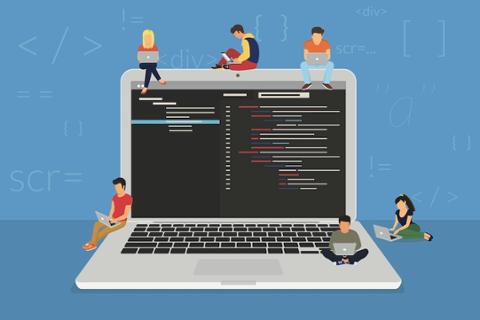What differentiates a successful programming language from an unsuccessful one? That’s a difficult question to answer, although if you ask most developers, they might say it has something to do with a language’s ubiquity and its ease of use. Popular programming languages are the beneficiaries of positive feedback loops; the more people use those languages to build and maintain vital software, the higher the likelihood those languages will continue to dominate.
The TIOBE Index, which produces a monthly update of the world’s most popular programming languages, has another idea why some languages maintain their top spots year after year: frequent updates.
“Except for language C, all programming languages in the top 8 are releasing new versions frequently,” reads the note accompanying February’s top rankings. “For instance, C#, which releases a language update almost every year. Or JavaScript, which changes so fast that hardly anybody can follow. C++ is changing less frequently (once in 3 years), but its latest release contains the introduction of modules, which will cause a major shift in C++ programming.”
According to this latest edition of the TIOBE Index, C is the top language, followed by Java, Python, C++, and C#. As the note suggests, these languages’ respective rankings don’t change very much; you need to go much further down the list to see the real action, such as Groovy climbing 14 spots over the past year (from 26th place to 12th), or Swift tumbling (oddly) from 10th place to 15th.
To create its monthly rankings, TIOBE utilizes data from a variety of aggregators and search engines, including Google, Wikipedia, YouTube, and Amazon. Languages that rank must fulfill certain criteria, including being Turing complete, having a Wikipedia entry, and earning more than 5,000 hits for +”<language> programming” on Google. That methodology has drawn its share of criticism, but it also makes TIOBE a useful tool for seeing how much “buzz” a language has.
What do the latest TIOBE rankings tell us? Not terribly much, except that popular programming languages remain popular. However, the point made in the accompanying note about frequent updates is worth keeping in mind. Whatever languages you decide to learn, you need to make sure you stay on top of all updates and changes, especially for those languages you use frequently in a work context. And if you’re interested in utilizing a lesser-used programming language for a particular project, pay attention to how often it’s updated—if it’s been years since the last major upgrade, that’s a potential red flag, and you may want to choose another language to use.



